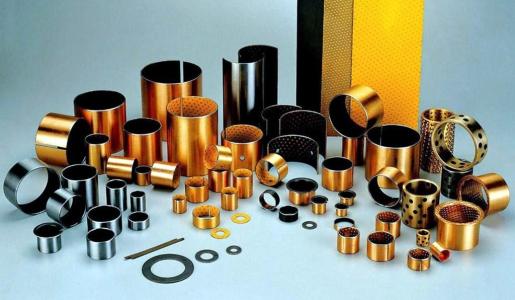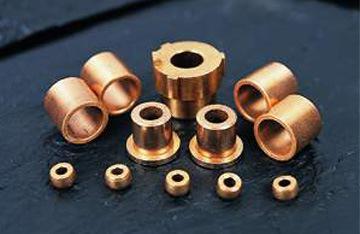Brief introduction of oil bearing and self lubricating bearing

The sintered body made by powder metallurgy with metal powder as the main raw material for oil bearing is porous in nature and has the technical advantages of freely adjusting the number, size, shape and distribution of pores in the manufacturing process. Using the porosity of the sintered body, the sintered body is impregnated with 10% ~ 40% (volume fraction) lubricating oil, and is used in the state of self supplying oil. When the bearing is running, the temperature of the bearing rises. Because the expansion coefficient of the oil is larger than that of the metal, it enters the sliding surface automatically to lubricate the bearing. Oil bearing can be used for a long time by adding oil once, which is often used in inconvenient oiling occasions.
The metal base inlaid solid self lubricating bearing is a new type of bearing which has both the characteristics of metal bearing and self lubricating bearing. The metal substrate bears the load, and the solid lubricating material with special formula plays the role of lubrication. It has the characteristics of high bearing capacity, impact resistance, high temperature resistance and strong self lubricating ability. It is especially suitable for heavy load, low-speed, reciprocating or swinging occasions which are difficult to lubricate and form oil film, and is not afraid of water erosion and other acid erosion and erosion. Inlaid bearing not only saves oil and energy, but also has a longer working life than ordinary sliding bearing. At present, the products have been widely used in metallurgical continuous casting machine, rolling equipment, mining machinery, ships, steam turbines, water turbines, injection molding machines and equipment production lines.

Differences
1. The results show that the oil bearing is composed of metal powder, with 10 ~ 40% structural clearance; the inlaid self lubricating bearing matrix is made by centrifugal casting; the matrix density is relatively high, the bonding strength is higher than that of oil bearing, and the service life is longer than that of oil bearing;
2. The lubricating material of oil bearing is lubricating oil, and the oil film has enough thickness to eliminate the direct contact between the two friction surfaces. At this time, there is only friction between liquid molecules, so the friction coefficient is very small (F = 0.001-0.008), which significantly reduces friction and wear; while the lubricating material of inlaid self-lubricating bearing is a solid lubricating material, which can still achieve good lubrication effect even under oil-free condition, which can ensure uninterrupted and sustainable lubrication, and its effective lubrication life is consistent with that of the substrate;
3. The lubricating oil in the oil bearing is volatile and easy to drain, and the lubricating oil film is lost quickly under high temperature and high pressure, so it is impossible to obtain the proper lubrication effect; however, after friction, the solid lubricant in the hole or groove transfers to or reversely transfers to the friction surface, forming a solid transfer film with good lubrication, firm adhesion and uniform coverage on the friction surface, which greatly reduces the friction and wear. With the friction going on, the embedded solid lubricant is continuously provided to the friction surface, which ensures the good lubrication of the friction pair during long-term operation.
Our company produces slide bearing, wrapped bronze bearings, bimetal bearing, higher load bronze bushing and self lubricating bearing, casting technology is advanced, can effectively extend the life of mechanical parts.